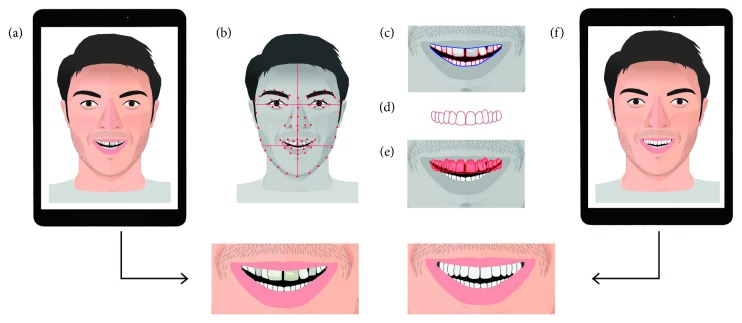Figure 1.
Schematic representation showing the basic principles of this technology. After having captured the patient's face with a picture or live with the touchpad camera (a), the FR software recognized virtual landmarks on the face (b), the lips and the smile of the patient (c). The software proposed a first mask on the patient's teeth (d). The overlay of the new mask enabled the visualization of the smile (e), and the patient was able to see the smile projected on the screen, with a set of pictures for APBS or in motion as a mirror in EMS (f).

